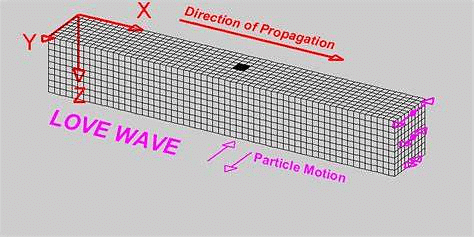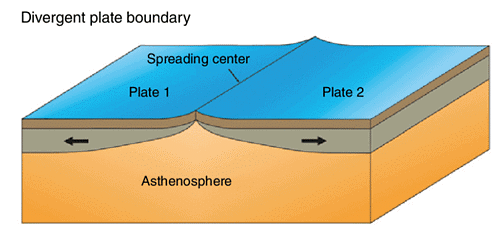Earthquake | Geography for UPSC CSE PDF Download
Introduction
Earthquakes are natural disasters that result from the sudden release of energy in the Earth’s crust, leading to seismic waves that shake the ground. These ground-shaking events are often triggered by the movement of tectonic plates beneath the Earth’s surface. In this article, we’ll explore types of earthquakes based on depth of focus, measurement of earthquakes, distribution of earthquakes in the world and India, and seismic zone mapping of India.
Earthquake Causes and Effects
- Earthquake Definition:
- An earthquake is the shaking of the Earth's surface.
- Results from the sudden release of energy in the Earth’s lithosphere.
- Creates seismic waves.
- Nature of Earthquake Energy:
- Earthquake is the form of energy of wave motion transmitted through the surface layer of the earth.
- Causes of Earthquakes:
- May be due to faulting, folding, plate movement, volcanic eruptions, and anthropogenic factors like dams and reservoirs.
- Unpredictability and Destructiveness:
- Earthquake is by far the most unpredictable and highly destructive of all the natural disasters.
- Frequency of Earth Tremors:
- Minor earth tremors caused by gentle waves of vibration within the earth’s crust occur every few minutes.
- Severity and Impact:
- Major earthquakes, usually caused by movement along faults, can be very disastrous, particularly in densely populated areas.
Terminology Used in the Study of Earthquakes
- Earthquake intensity
- Earthquake magnitude
- Richter Scale
- Mercalli Scale
- Fault
- Focus
- Epicentre
- Seismic wave
- Seismograph
Focus and Epicenter
The point within Earth where faulting begins is the focus or hypocenter.
The point directly above the focus on the surface is the epicentre.

Richter Scale
- Richter magnitude scale is the scale to measure the magnitude of energy released by an earthquake.
- Charles devised this scale. F. Richter in the year 1935.
- The number indicating magnitude ranges between 0 to 9.
An earthquake that registers 5.0 on the Richter scale has a shaking amplitude ten times that of an earthquake that registered 4.0, it corresponds to a release of energy 31.6 times that released by the lesser earthquake.

Mercalli scale
- The Mercalli intensity scale is a seismic scale used for measuring the intensity of an earthquake.
- It measures the effects of an earthquake.
- The number indicating intensity ranges between 1 to 12.

Seismic Waves
- Seismic waves are the waves of energy caused by the sudden breaking of rock within the earth.
- They are the energy that travels through the earth and is recorded on seismographs.
- The two main types of waves are body waves and surface waves.
➤ Body waves
(i) Primary waves ( P-waves)
(ii) Secondary waves ( S-waves)
➤ Surface Waves
(i) Love Waves (L-waves)
(ii) Rayleigh waves
Primary waves (longitudinal wave)-
- The first kind of body wave is the P wave or primary wave.
- This is the fastest kind of seismic wave.
- The P wave can move through gaseous, solid rock and fluids, like water or the earth's liquid layers.
- It pushes and pulls the rock; it moves through just like sound waves push and pull the air.

Secondary waves (transverse wave)
- The second type of body wave is the S wave or secondary wave.
- An S wave is slower than the P wave and can only move through solid rock.
- This wave moves rock up and down, or side-to-side.
- S-waves arrive at the surface with some time Lag.

Love Waves
- The first kind of surface wave is called a Love wave, named after A.E.H. Love, a British mathematician.
- It’s the fastest surface wave and moves the ground from side-to-side.

Rayleigh Waves
- The other kind of surface wave is the Rayleigh wave, named after Lord Rayleigh.
- A Rayleigh wave rolls along the ground just like a wave moves across a lake or an ocean.
- Because it rolls, moves the ground up and down and side-to-side in the same direction that the wave is moving.
- Most of the shaking felt from an earthquake is due to the Rayleigh wave, which can be much larger than the other waves.

Classification of Earthquake
- Based on causative factors
- Natural
(i) Volcanic
(ii) Tectonic
(iii) Isostatic
(iv) Plutonic - Artificial
- Natural
- Based on the depth of focus
- Moderate(0-50km)
- Intermediate(50-250km)
- Deep focus( 250-700km)
- Based on human casualties
- Moderate (deaths<50,oo)
- Highly hazardous(51,000-1,00,00)
- Most hazardous(>1,00,00)
World Distribution of Earthquakes
- The world’s distribution of earthquakes coincides very closely with that of volcanoes.
- Region of greatest seismicity are Circum-Pacific areas, with the epicentres and the most frequent occurrences along the ‘Pacific Ring of Fire’.
- It is said that as many as 70% of earthquakes occur in the Circum-Pacific belt.
- Another 20% of earthquakes occur in the Mediterranean-Himalayan belt, including Asia Minor, the Himalayas and parts of north-west China.
- Remaining occur in the interiors of plates and on spreading ridge centres.
Earthquake Causes
Earthquakes are caused mainly due to dis-equilibrium in any part of the crust of the earth.
Several causes have been assigned to caused dis-equilibrium or isostatic imbalance in the earth’s crust such as-.
- Volcanic eruption
- Faulting and folding
- Upwarping and down warping
- Gaseous expansion and contraction inside the earth.
- The hydrostatic pressure of human-made water bodies like reservoirs and lakes.
- Plate Movement
Plate tectonics provides the most logical explanation of volcanoes and earthquakes.
There are three types of plate boundaries along which earthquake occurs.
- Convergent
- Divergent
- Transform






Damage caused by earthquakes
- Slope instability and landslides
- Damage to human structures
- Damage to towns and cities
- Loss of human lives
- Fires
- Deformation of the ground surface
- Flash floods
- Tsunamis
Earthquake warning system
An earthquake warning system is a technological tool designed to provide advance notice and alerts to individuals, communities, and organizations about imminent earthquakes.

Key components and features of earthquake warning systems include:
- Seismic Sensors: These are distributed sensors that detect the initial seismic waves generated by an earthquake. The sensors are strategically placed to cover seismic-prone areas.
- Real-time Data Analysis: Sophisticated algorithms analyze the data collected by seismic sensors in real-time to determine the earthquake's location, depth, and magnitude.
- Early Warning Alerts: Once the system identifies a significant earthquake, it sends out alerts to individuals and organizations in the affected regions. The alerts can be transmitted through various channels such as mobile apps, text messages, sirens, and broadcast systems.
- Public Notification Systems: Earthquake warning systems aim to reach the public rapidly, providing clear and actionable information on the impending earthquake, including expected intensity and recommended actions.
- Integration with Infrastructure: Some systems are designed to automatically trigger actions such as stopping trains, shutting down critical infrastructure, or activating emergency response procedures to mitigate potential damage.
- Community Education and Training: Effective earthquake warning systems often include educational initiatives to inform the public about the system's capabilities, how to respond to alerts, and general earthquake preparedness.
- International Collaboration: In regions prone to earthquakes, international collaboration is crucial. Shared data and standardized systems allow for a more comprehensive and effective warning network.
- Continuous Improvement: Earthquake warning systems undergo continuous improvement based on feedback, technological advancements, and lessons learned from previous seismic events.
These systems play a vital role in reducing the impact of earthquakes by providing valuable seconds to minutes of warning before the more damaging seismic waves arrive, allowing people to take protective actions and automated systems to initiate safety protocols.
|
264 videos|875 docs|232 tests
|
FAQs on Earthquake - Geography for UPSC CSE
| 1. What are the primary causes of earthquakes? |  |
| 2. What is the difference between the focus and epicenter of an earthquake? |  |
| 3. How does the world distribution of earthquakes vary? |  |
| 4. What kind of damage can earthquakes cause? |  |
| 5. Is there an earthquake warning system in place? |  |

















